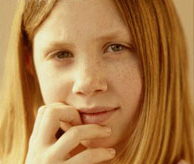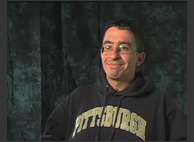| ASA: Treatment | |
| ASA: Learning Approaches | |
| Jeff, Age 35 | |
| Richard, Age 52 | |
| NIMH: Autism Spectrum Disorders (pdf) | |
| AAP - Medical Home & Early Intervention (pdf) | |

Learning Approaches - Applied Behavior Analysis (ABA)
Many of the interventions used to treat children on the autism spectrum are based on the theory of Applied Behavior Analysis (ABA) - that behavior rewarded is more likely to be repeated than behavior ignored. Although ABA is a theory, many people use the term to describe a specific treatment approach with subsets that include discrete trial training or the Lovaas method. While the terms discrete trial and Lovaas have been used interchangeably, only practitioners who are affiliated with Dr. O. Ivar Lovaas from UCLA can be said to implement the Lovaas approach.
In discrete trial training, every task given to the child consists of a request to perform a specific action, a response from the child, and a reaction from the therapist. It is not just about correcting behaviors but is designed to teach skills from basic, such as sleeping and dressing, to more involved, such as social interaction. Discrete trial training is an intensive approach. Children usually work for 30 to 40 hours a week one-on-one with a trained professional. Tasks are broken down into short simple pieces, or trials. When a task has been successfully completed, a reward is offered, reinforcing the behavior or task. This method is not without controversy. Some practitioners feel it is emotionally too difficult for some children with ASD, that the time requirement of 30 to 40 hours a week is too intensive and intrusive on family life; and that while it may change a particular behavior, it does not prepare a child to respond to new situations. However, research has shown that ABA techniques show consistent results in teaching new skills and behaviors to children on the autism spectrum.



